These beautifully decorated Traditional Easter Pace Eggs are made with 100% natural dyes, and spring flowers, herbs and leaves.

A British Easter Tradition
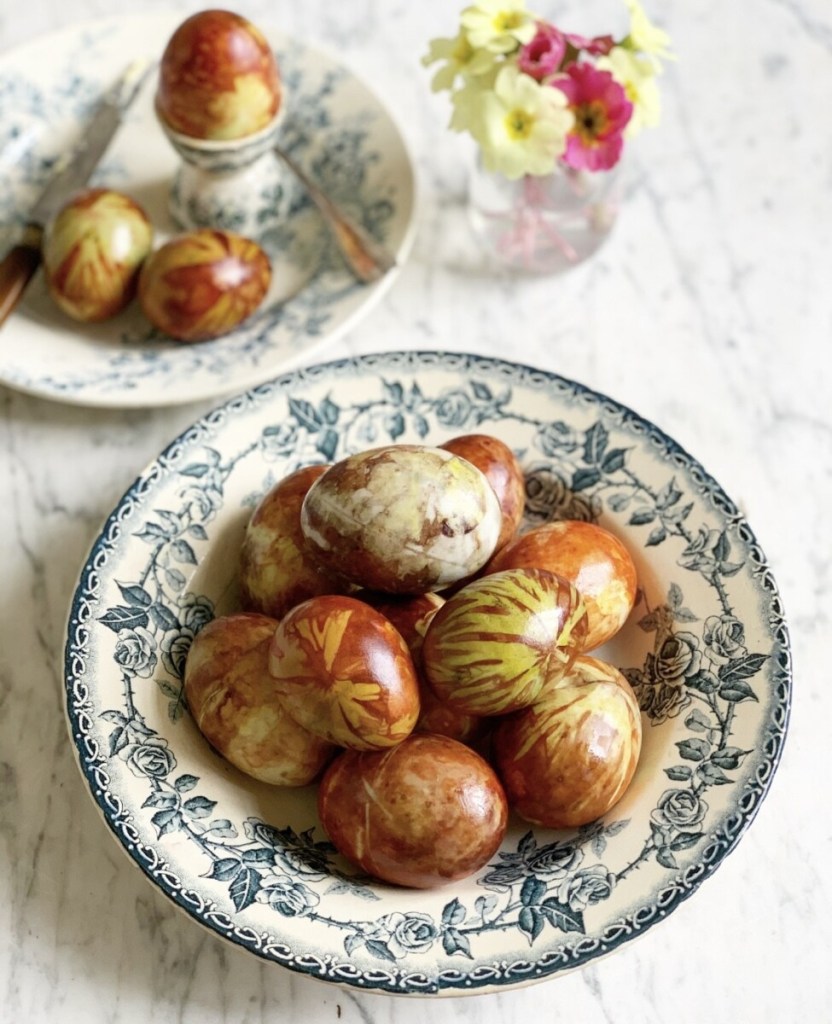
These beautifully decorated Traditional Easter Pace Eggs are made with 100% natural dyes, and spring flowers, herbs and leaves.
Traditional Easter Pace Eggs is a very old British traditional method of colouring and dying eggs that are boiled and eaten on Good Friday & throughout the Easter weekend.
There are commercial dyes available nowadays, but I still prefer the traditional natural methods of colouring my Traditional Easter Pace Eggs, with onions skins, You can also use red cabbage, spinach & beetroot water for other colours.
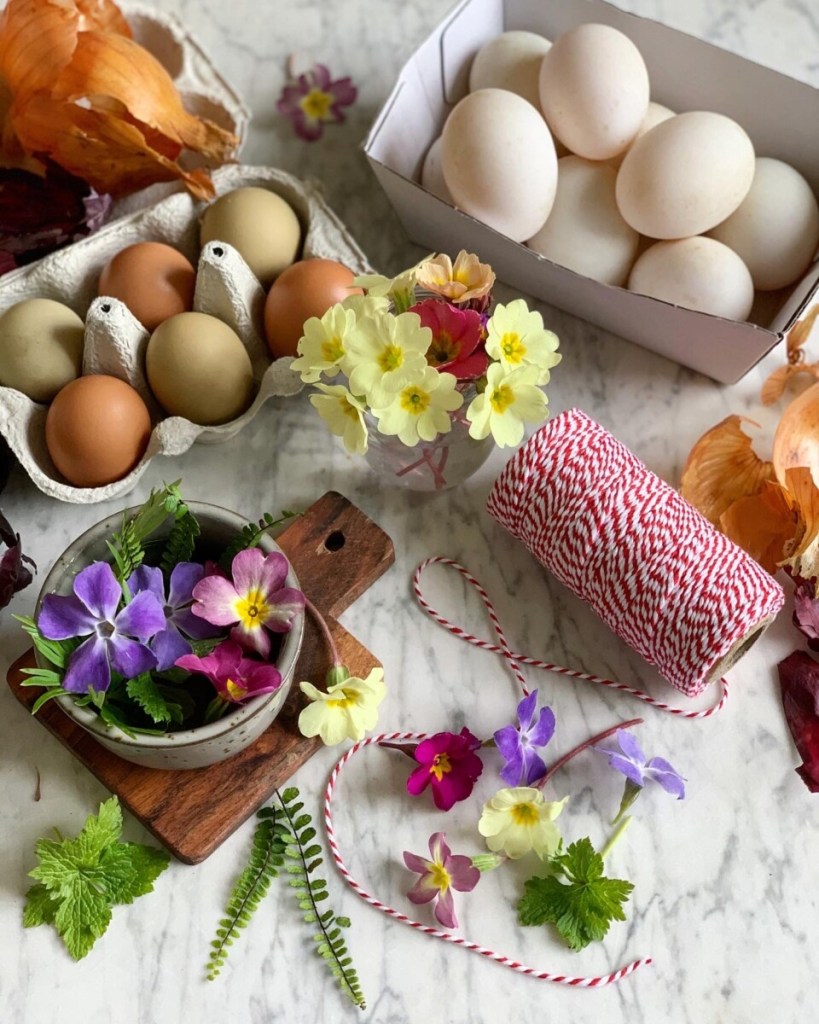
The History of Decorated Eggs at Easter
The name Pace is thought to derive from the French word for Easter, Pâques, and in some parts of Britain (mainly Lancashire in the North West), these eggs are rolled down a hill, the winner being the owner of the egg which goes the furthest and has the least cracks or breaks in it.
It is also traditional to give one of these eggs to each person who visits your home throughout the Easter period – what a wonderful alternative to the commercially over packaged chocolate eggs.
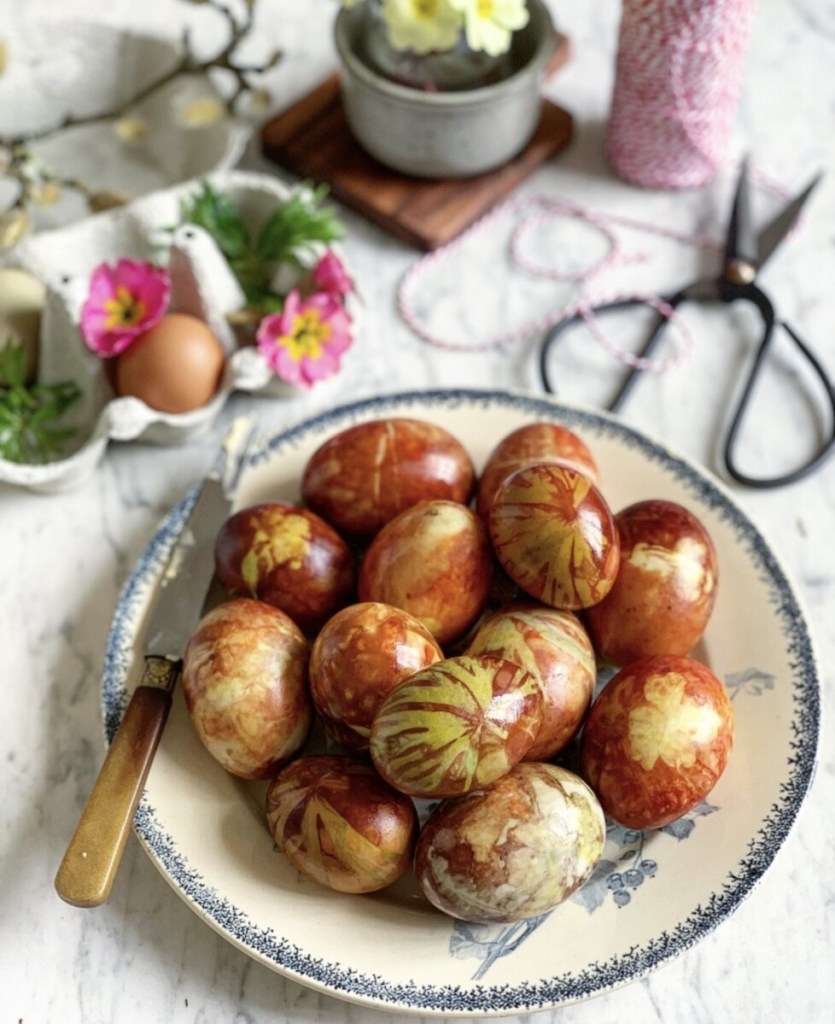
Another Easter tradition, usually found in the North of England, is the practice is Pace Egg Plays. Pace Egg Plays are traditional village plays, with the traditional Easter rebirth theme, where St George vanquishes all the potential challengers and the fool, “Toss Pot”, rejoices.
These plays takes the form of a classic combat between “goodie” (hero) and “baddie” (villain), in which the hero is killed and then brought back to life, invariably by a character called the “quack doctor”.
Sadly, many Pace Egg plays died out after the Great War (The First World War), as so many of the men who took part in them were killed in action, however, the plays have enjoyed a remarkable renaissance in recent years, with the most famous taking place in Heptonsall, in West Yorkshire.
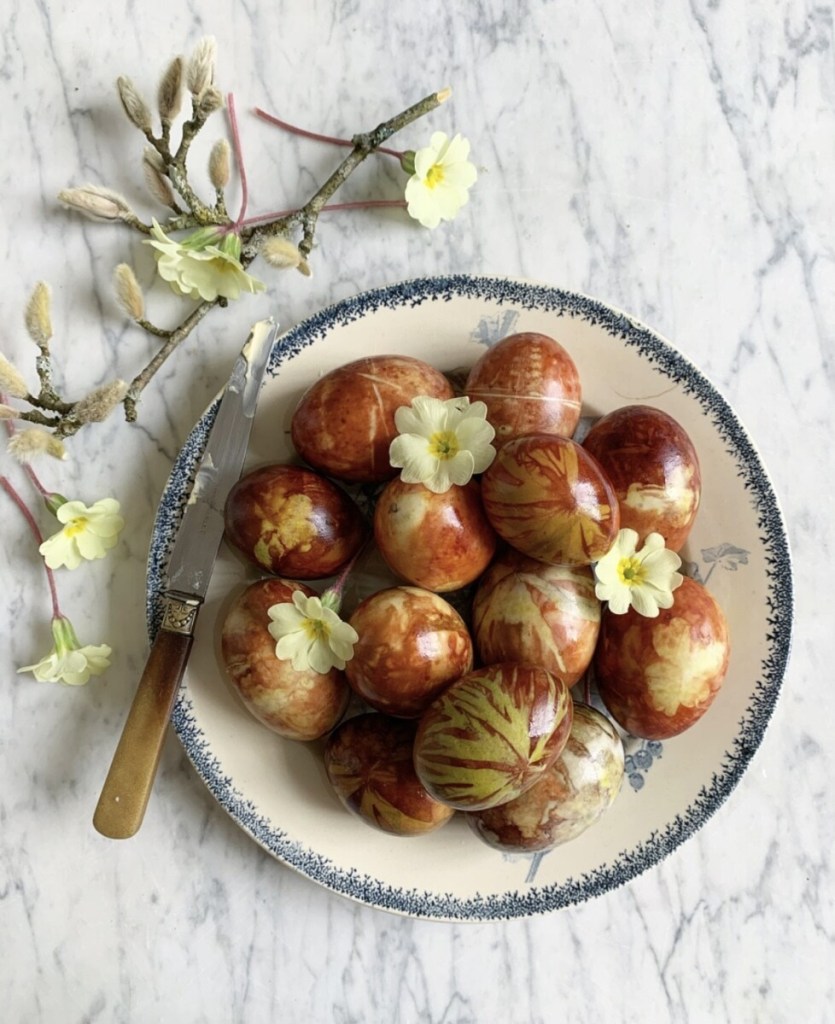
But back to my eggs, I am posting this recipe for Pace Eggs today, as I suddenly realised that Good Friday is just 4 days away, and I am hoping to share lots of traditional Easter recipes with you over the next few days…….so you can get menu planning.
I am lucky enough to be able to use my lovely chicken’s eggs for these pace eggs, all free-range with deep golden-yellow yolks, wonderful Easter eggs in all respects. I hope you enjoy making these pace eggs this Easter.
I know that children especially enjoy getting involved, and I remember my daughter’s face when having helped to wrap the eggs in leaves and onion skins, on being taken out of the pan the patterned and marbled eggs emerged – her face was a joy to behold!
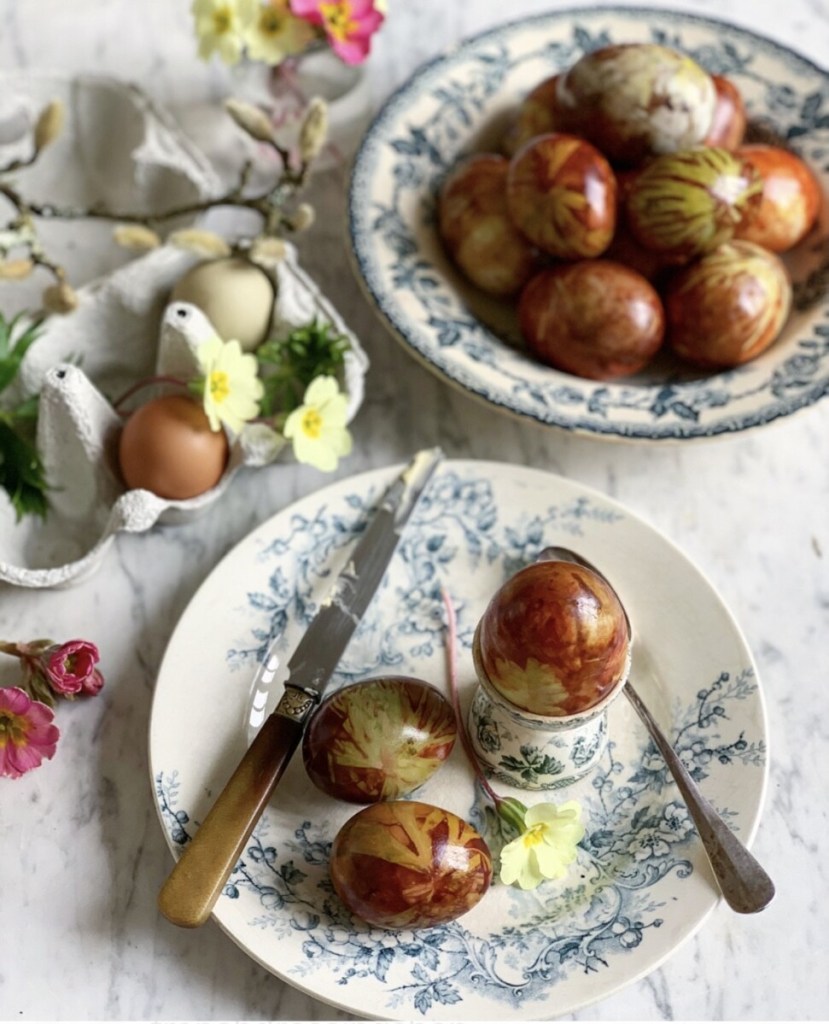
Step-by-Step Method and Photos how to Make Traditional Easter Pace Eggs
- Assemble all of your “natural dyes”, flowers, leaves, string, elastic bands and the eggs of course.
- Peel the outer skins away from red and yellow onions. Wrap the skins around the eggs in a random way, placing flowers and leaves next to eggs and on top of the onion skins. *You do not need to cover the egg completely.
- Tie string around the eggs, with an elastic band to keep the onion skins in place if necessary too.
- Encase the eggs with the onion skins in clingfilm or a piece of aluminium foil – covering them completely. The tie more pieces of non-coloured string around the eggs, with another elastic band.
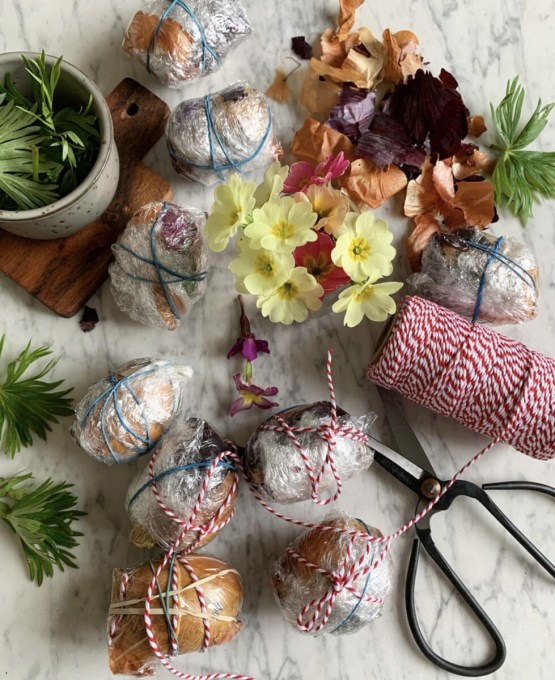
- Boil the eggs for about 8 to 9 minutes. Take them off the heat and allow to cool in the water for a couple of minutes.
- Then place them in a colander and dispense with the water. Allow them to drain and cool some more, so they can be handled.
- Peel away the string, elastic bands, clingfilm, aluminium foil, onion skins. Then “polish” the eggs with a some butter to deepen the colours and give them a gloss.
- Arrange the coloured eggs in a basket or egg holder – for the centre of the Easter Breakfast, Tea or Brunch table.
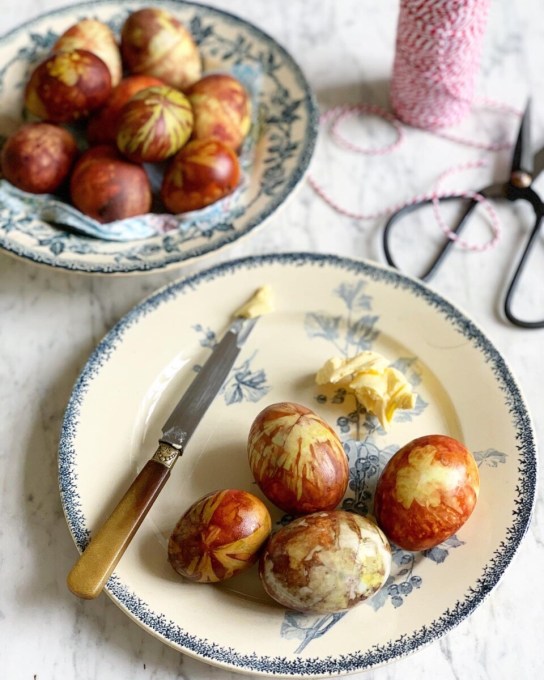
- Serve them with bread and butter, and a pinch of salt.
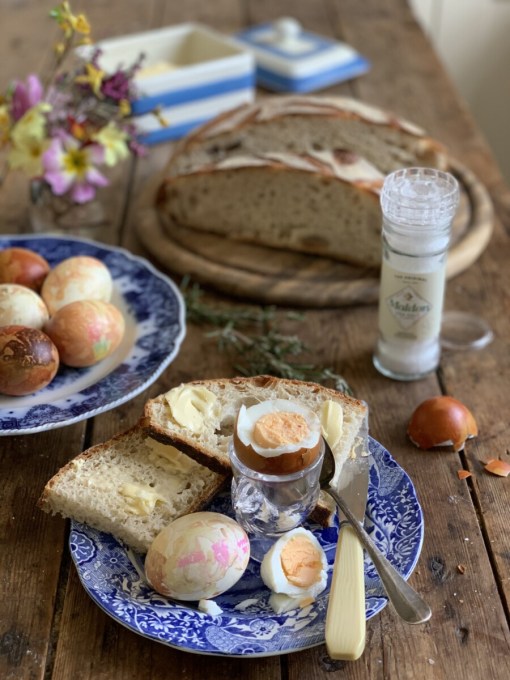
Notes and Substitutions
- If you want to go plastic and aluminium foil free, place the onion skin covered eggs in the legs of a clean pair of tights, and knot them in-between each egg. Or, you can use squares of muslin.
- Alternative natural dyes include, beetroot water and spinach water for red and green eggs. Red cabbage gives a wonderful blue colour, and gorse flowers adds a warm yellow shade.
- Use white duck eggs for more vivid colours, and for larger eggs.
- I keep my own hens, and I also used blue, olive green and dark brown eggs too, which give amazing results too.
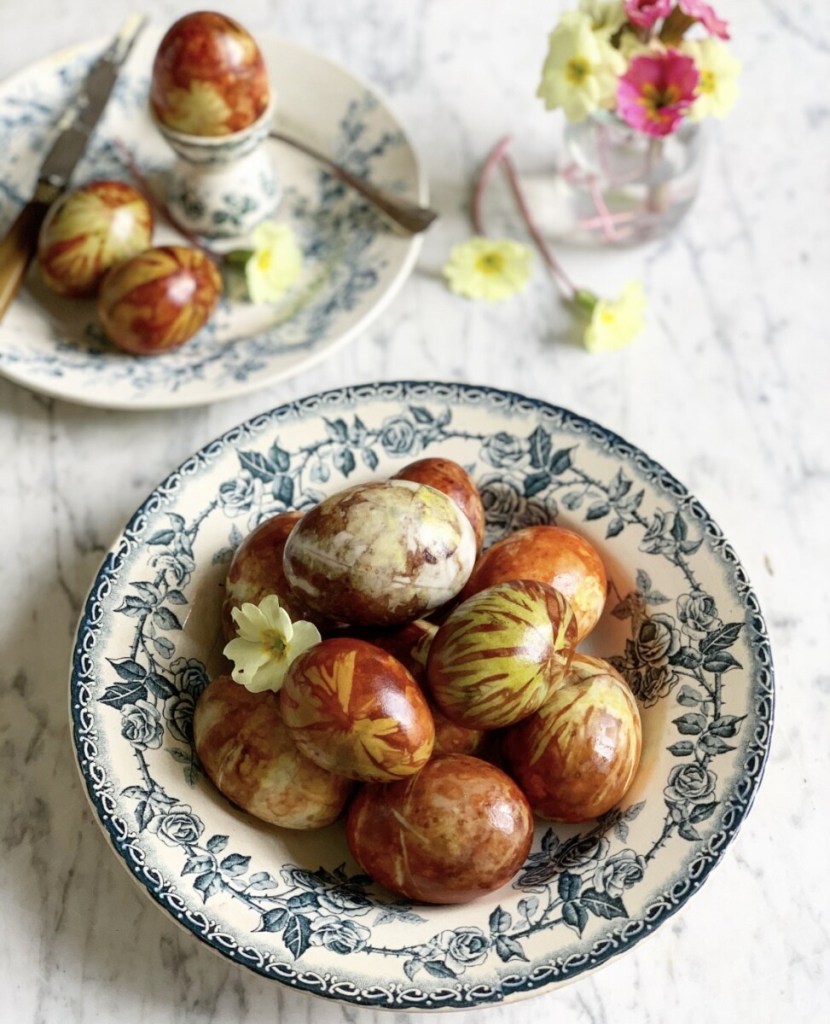
More Egg Recipes
- Easy Homemade Scotch Eggs
- Coddled Eggs with Smoked Salmon & Dill
- Freezer Breakfast Sandwiches with Ham, Eggs and Cheese
- Edwardian Curried Eggs
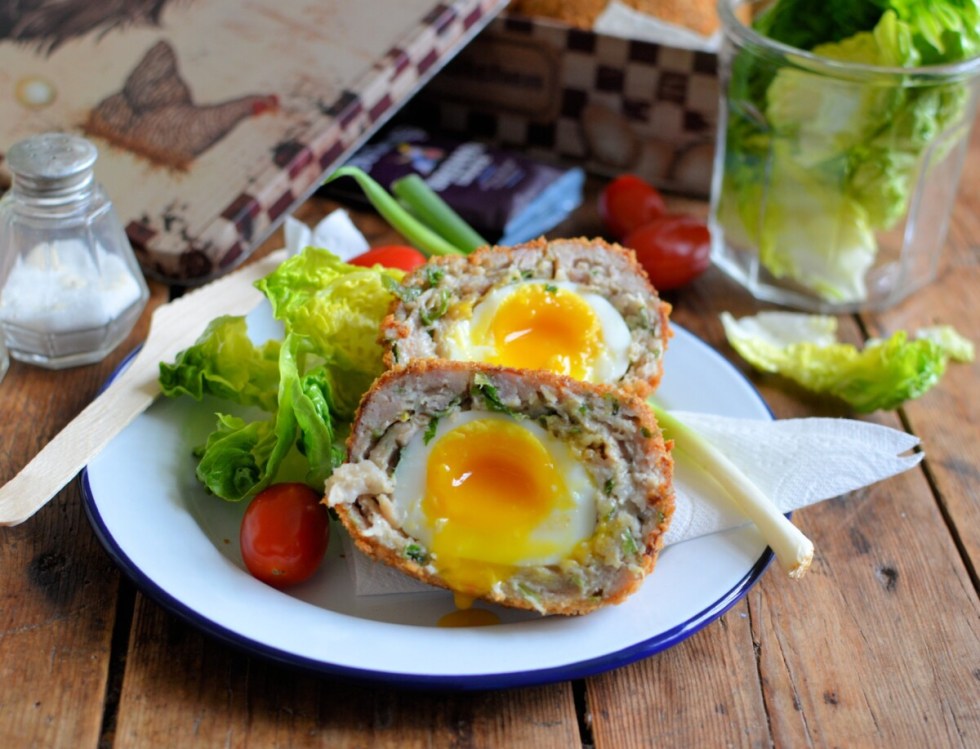
Easy Scotch Eggs 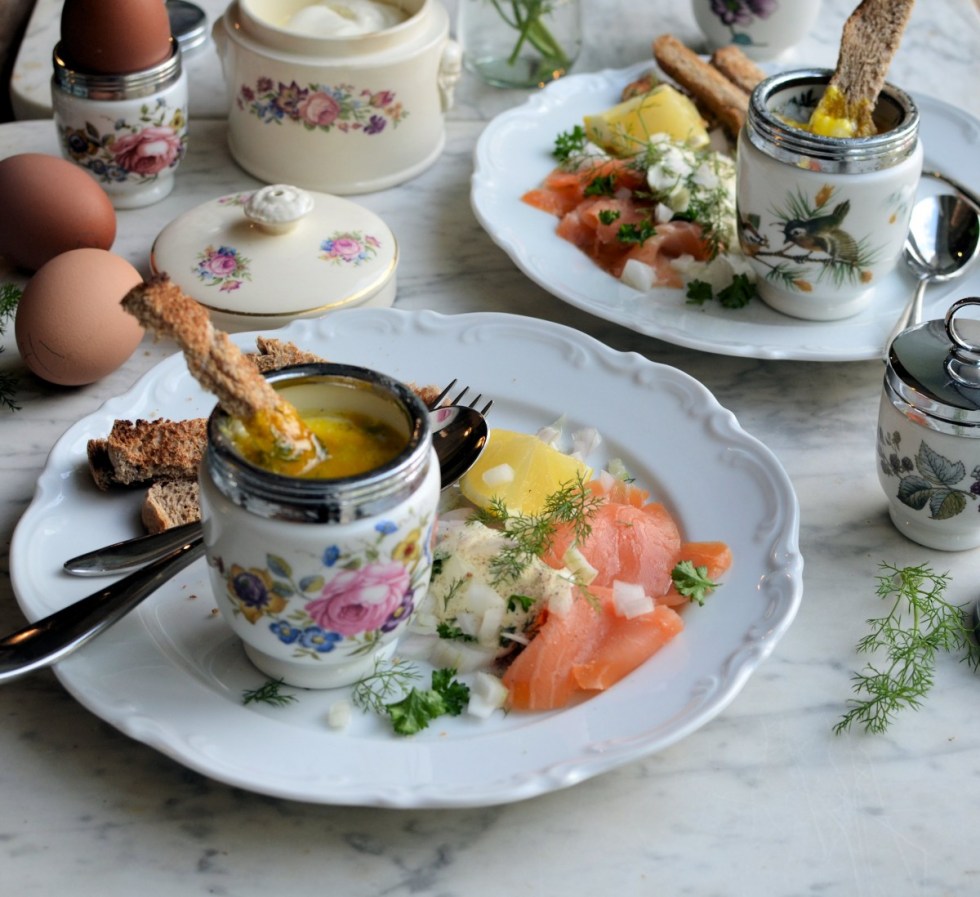
Coddled Eggs with Smoked Salmon & Dill 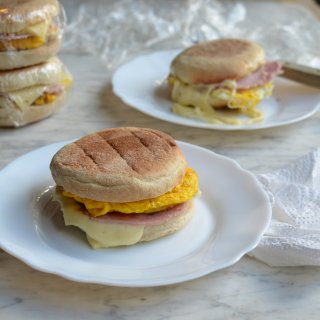
Freezer Breakfast Sandwiches with Ham, Eggs and Cheese 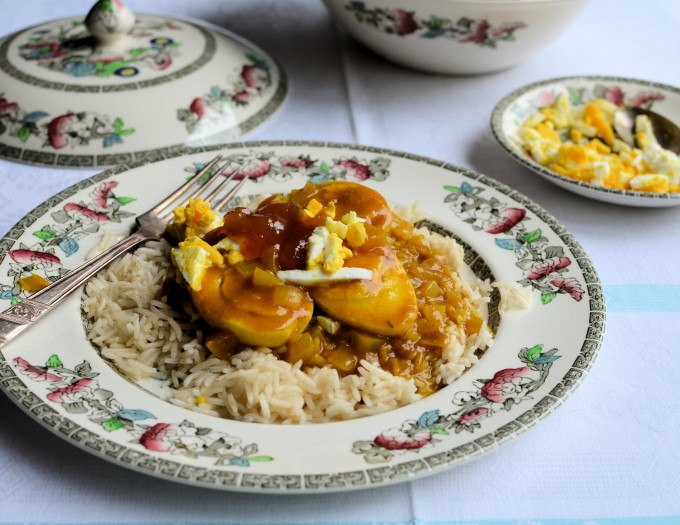
Edwardian Curried Eggs
Pin me for Later
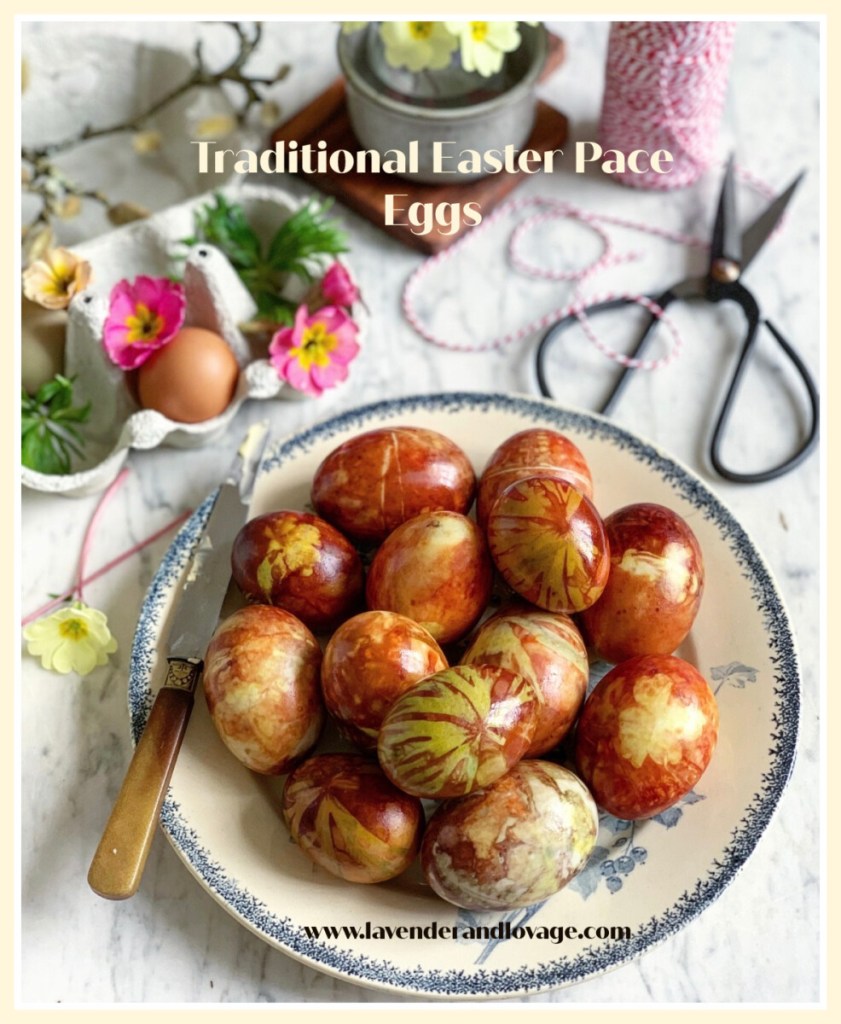

Recipe for Traditional Easter Pace Eggs


Traditional Easter Pace Eggs
These beautifully decorated Traditional Easter Pace Eggs are made with 100% natural dyes, and spring flowers, herbs and leaves.
Traditional Easter Pace Eggs is a very old British traditional method of colouring and dying eggs that are boiled and eaten on Good Friday & throughout the Easter weekend.
There are commercial dyes available nowadays, but I still prefer the traditional natural methods of colouring my Traditional Easter Pace Eggs, with onions skins, You can also use red cabbage, spinach & beetroot water for other colours.
Ingredients
- 12 free-range eggs, all colours
- 6 to 8 onion skins, yellow and red
- Assorted spring flowers and leaves
- Clingfilm, or aluminium foil
- Elastic bands
- Natural non-coloured string
- Butter for glazing
Instructions
1. Peel the outer skins away from red and yellow onions. Wrap the skins around the eggs in a random way, placing flowers and leaves next to eggs and on top of the onion skins. *You do not need to cover the egg completely.
2. Tie string around the eggs, with an elastic band to keep the onion skins in place if necessary too.
3. Encase the eggs with the onion skins in clingfilm or a piece of aluminium foil - covering them completely. The tie more pieces of non-coloured string around the eggs, with another elastic band.
4. Boil the eggs for about 8 to 9 minutes. Take them off the heat and allow to cool in the water for a couple of minutes.
5. Then place them in a colander and dispense with the water. Allow them to drain and cool some more, so they can be handled.
6. Peel away the string, elastic bands, clingfilm, aluminium foil, onion skins. Then "polish" the eggs with a some butter to deepen the colours and give them a gloss.
7. Arrange the coloured eggs in a basket or egg holder - for the centre of the Easter Breakfast, Tea or Brunch table.
8.Serve them with bread and butter, and a pinch of salt.
Notes
If you want to go plastic and aluminium foil free, place the onion skin covered eggs in the legs of a clean pair of tights, and knot them in-between each egg. Alternatively, you can use squares of muslin too.
Alternative natural dyes include, beetroot water and spinach water for red and green eggs. Red cabbage gives a wonderful blue colour, and gorse flowers adds a warm yellow shade.
Use white duck eggs for more vivid colours, and for larger eggs.
I keep my own hens, and I also used blue, olive green and dark brown eggs too, which give amazing results too.
Nutrition Information
Yield 12 eggs Serving Size 1Amount Per Serving Calories 108Total Fat 6gSaturated Fat 2gTrans Fat 0gUnsaturated Fat 3gCholesterol 189mgSodium 80mgCarbohydrates 7gFiber 1gSugar 3gProtein 7g
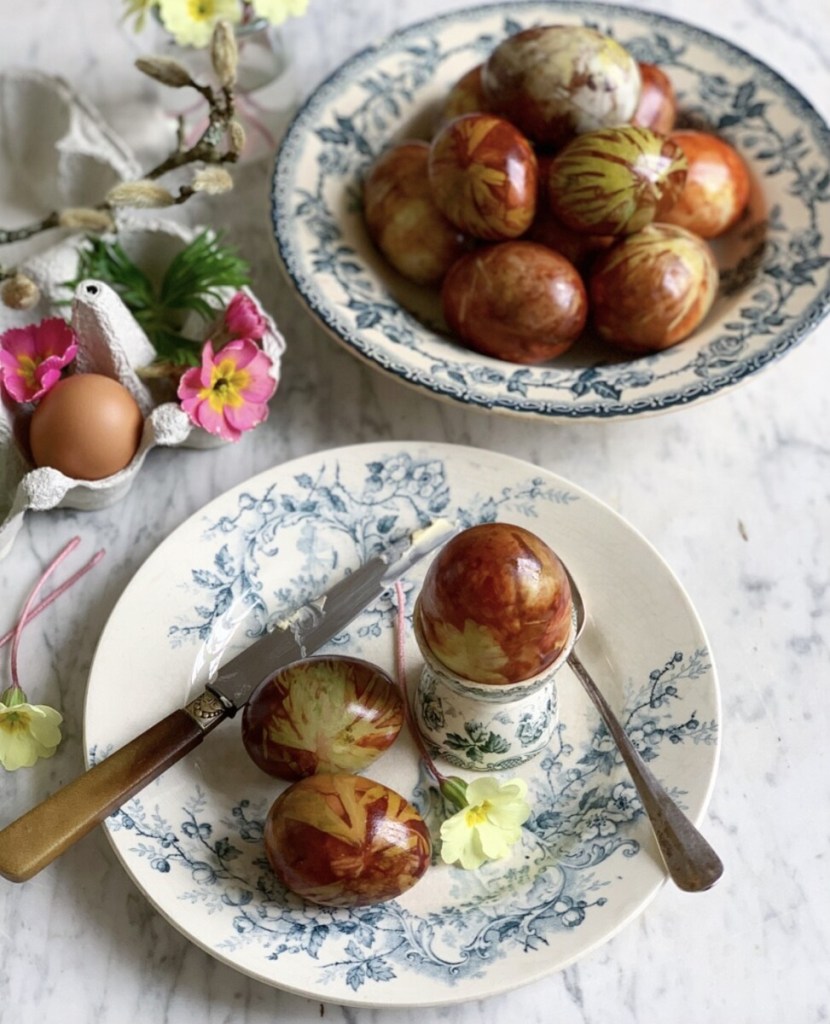
I have added these Traditional Easter Pace Eggs to CookBlogShare Week 13

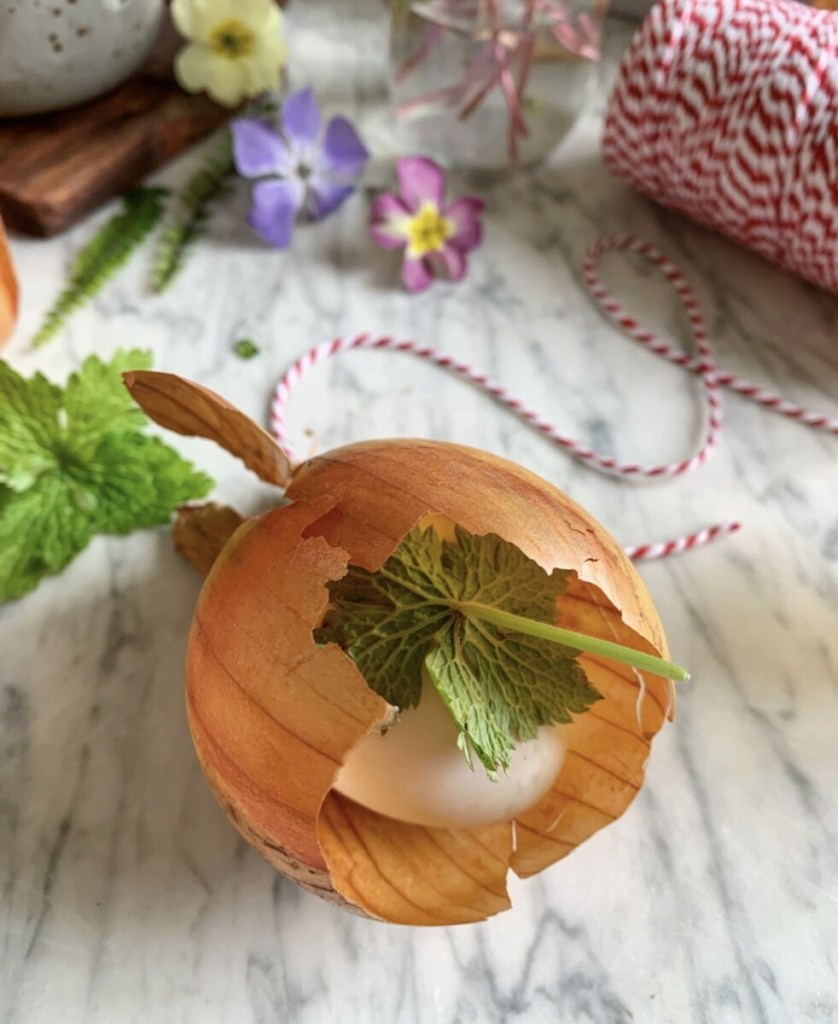
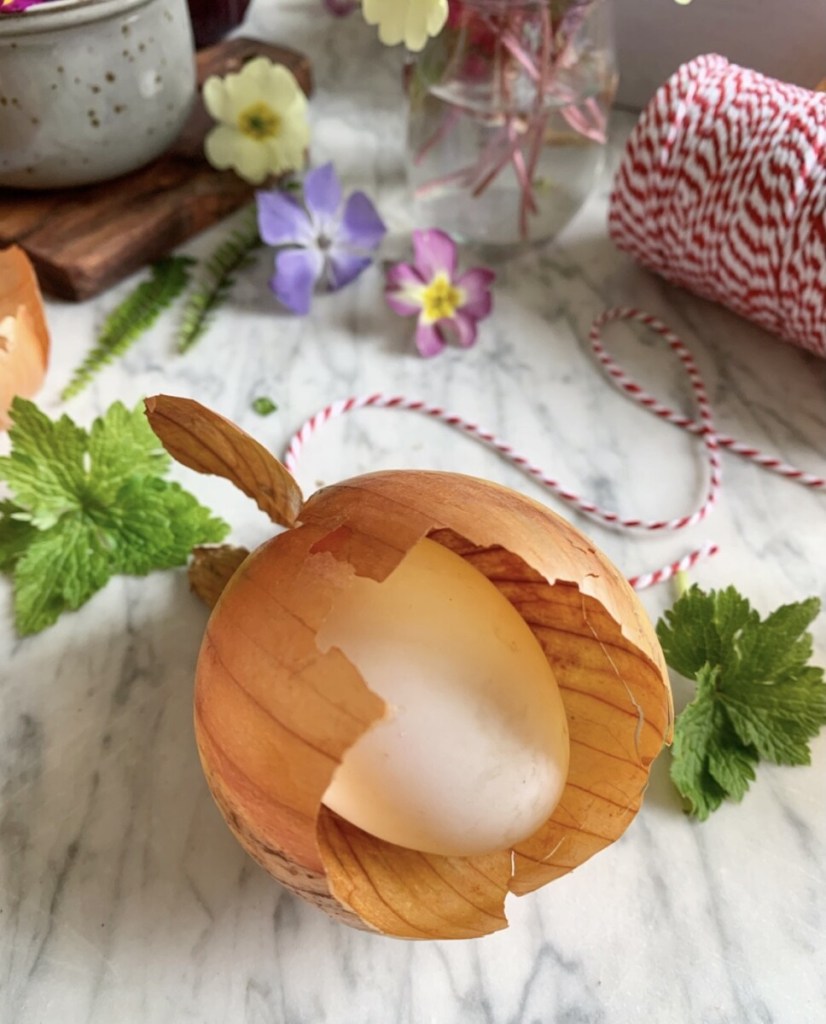
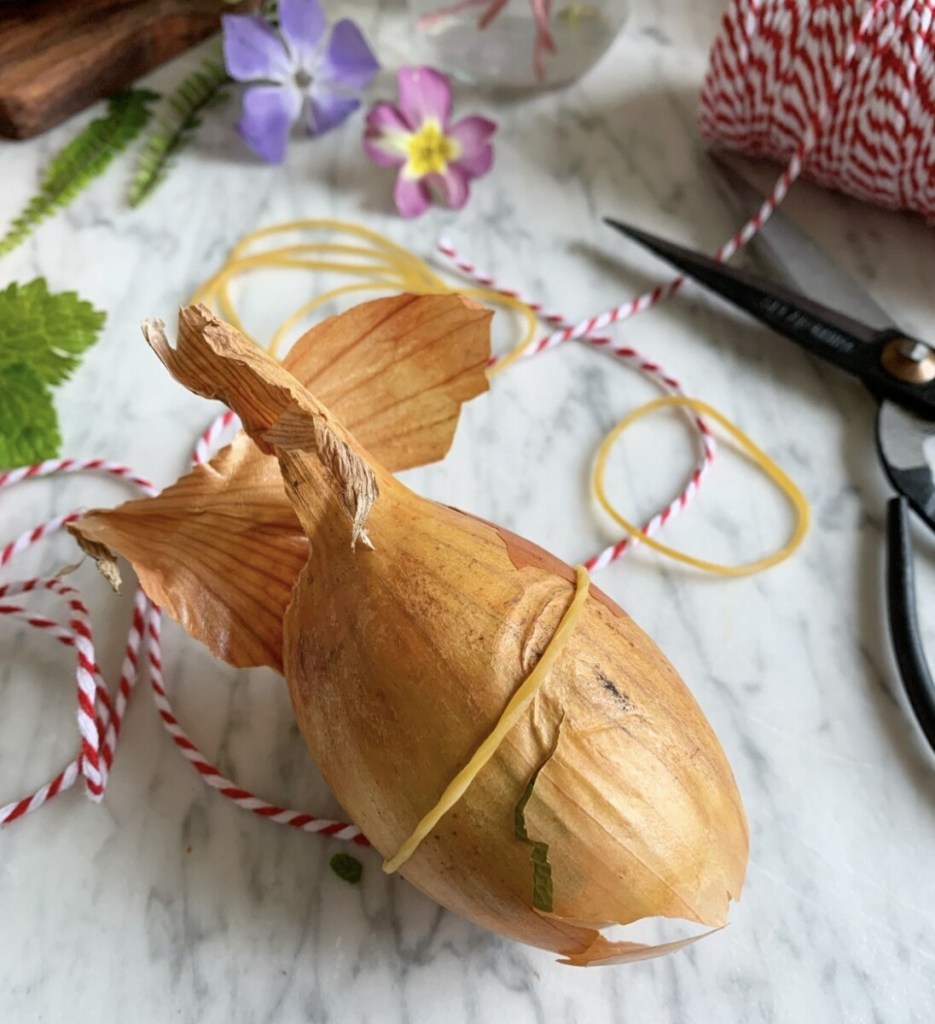
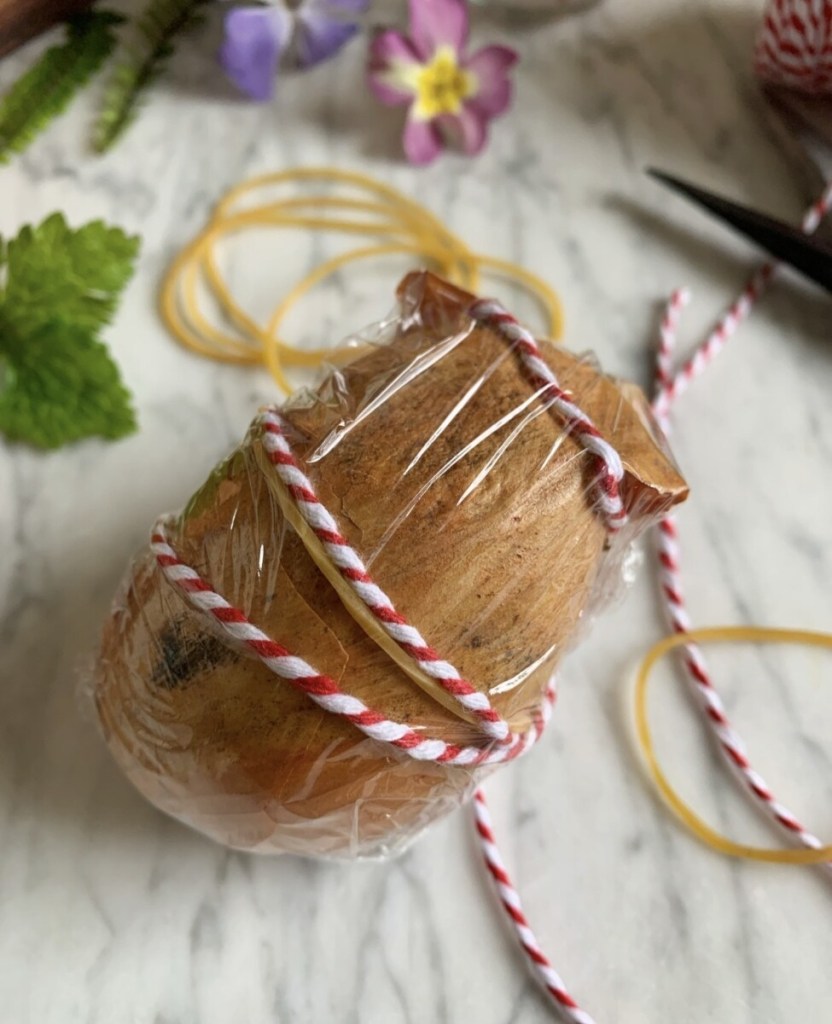
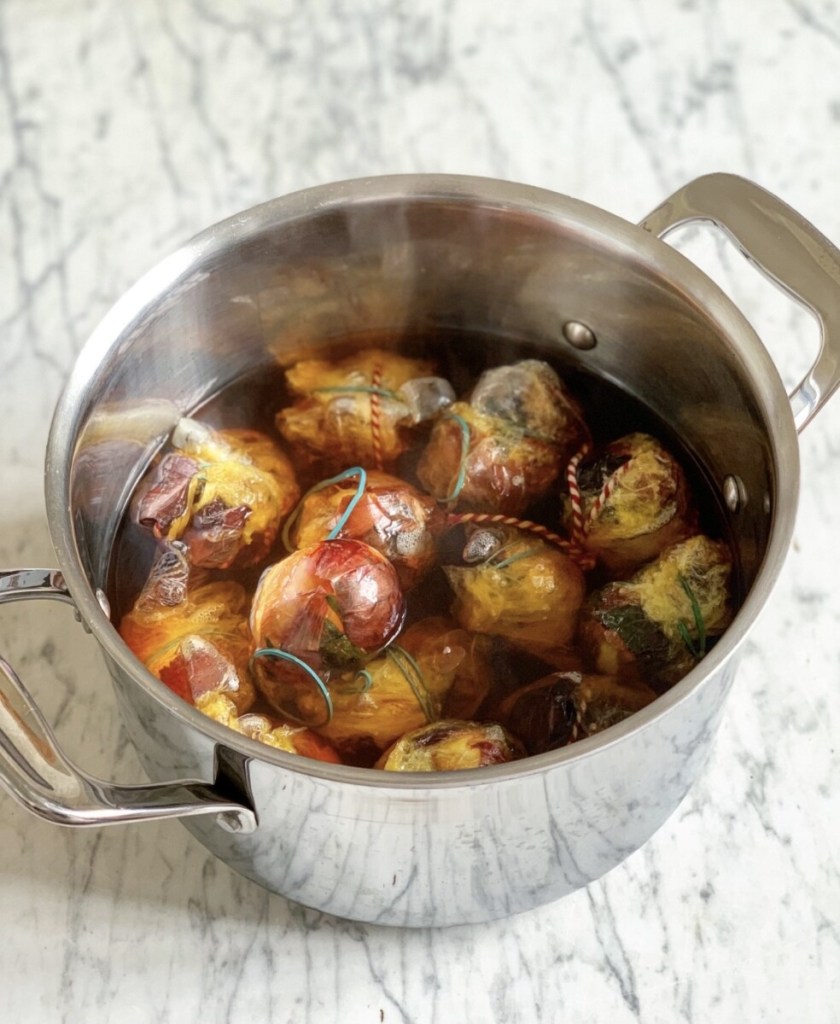
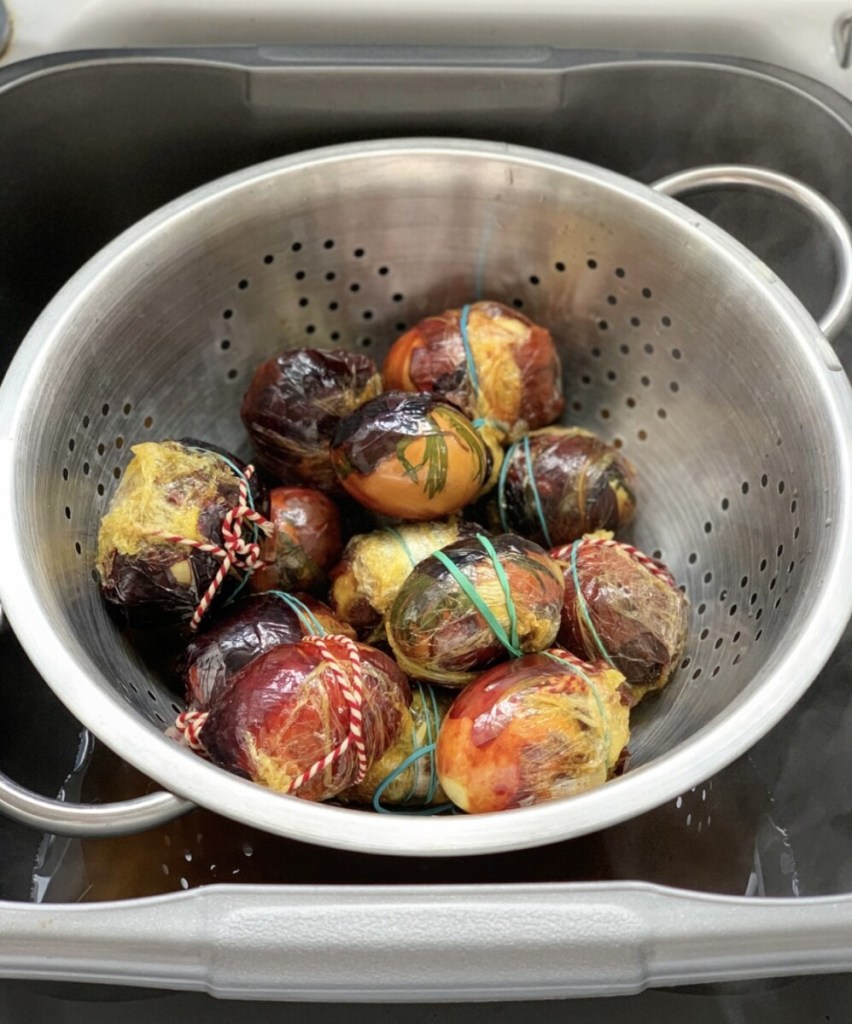
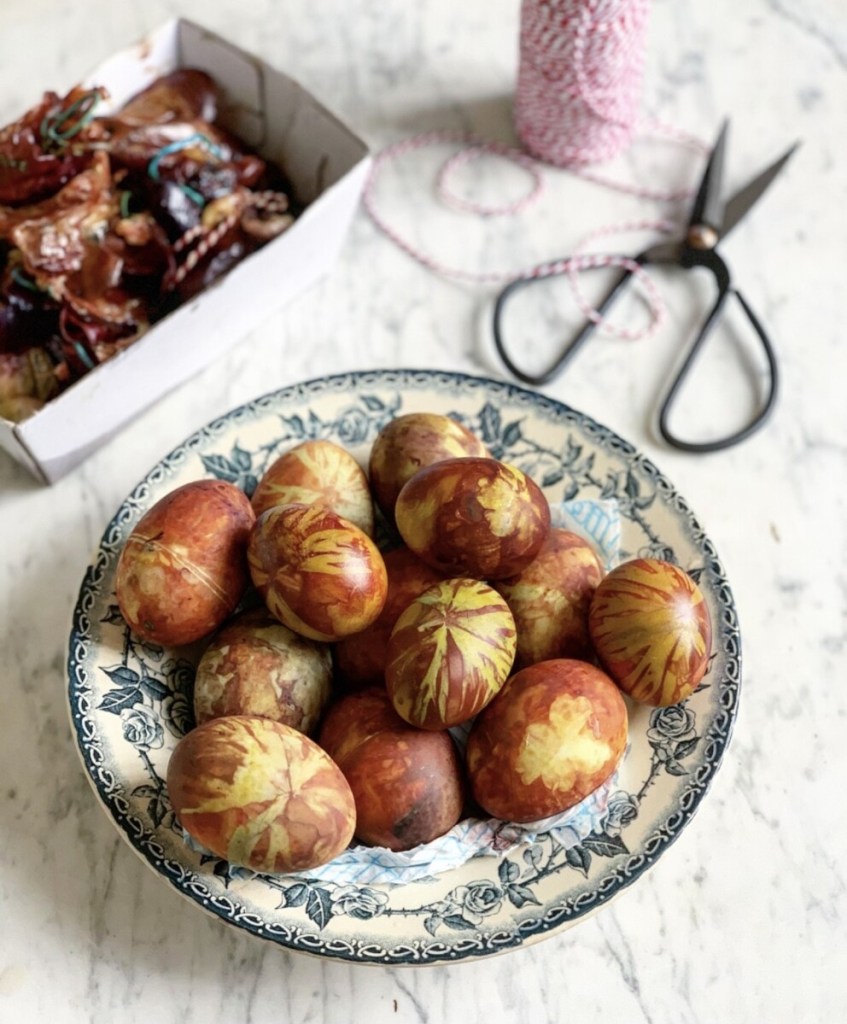
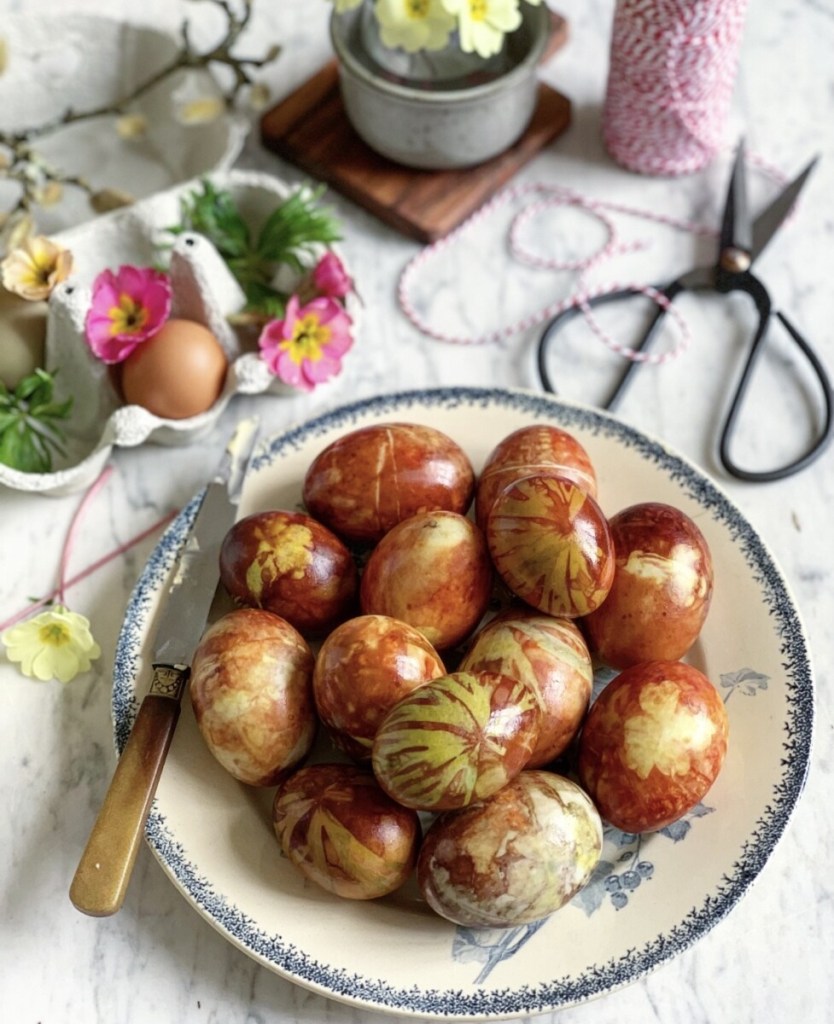
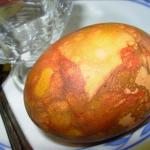
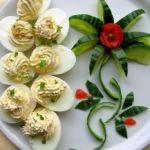



Kate - Gluten Free Alchemist says
Well! How beautiful are they?!
I had to come over to find out what a ‘pace egg’ was. So clever! I’d be mighty happy if one of these turned up on my breakfast table xx
Karen Burns-Booth says
Thanks Kate, I remember making these with my mum, and they are our traditional Easter Sunday breakfast. Karen
Sisley White says
These are so beautiful and perfect for Easter. I really want to try it out.
Karen Burns-Booth says
Thanks so much Sisley! Karen
Jacqui – Only Crumbs Remain:Recipes Made Easy says
These are just beautiful. Ive never dyed eggs before but that might change now Ive seen these
Karen Burns-Booth says
Thank you Jacqui, I used to make these with my mum 🙂
Corina Blum says
This is such a lovely idea! I hadn’t come across it before but would love to try it with my children. I think they’d love dying the eggs!
Karen Burns-Booth says
I think you and your children will love making these pace eggs Corina 🙂 Karen
Choclette says
Karen, your eggs are outrageously splendid. I’ve been admiring them ever since you posted the first one on social media. Thoroughly approve of the natural dyes and I reckon they’re the best Easter centrepiece I’ve ever seen.
Karen Burns-Booth says
Thanks so much Choclette! They are fun to make and it’s lovely to continue with old traditions, as well as being a wonderful idea for an Easter morning breakfast. Thanks again for hosting CookBlogShare this week too! Karen
Kat (The Baking Explorer) says
These eggs are so beautiful!
Karen Burns-Booth says
Thanks Kat, they are fun to make too, and make a lovely Easter breakfast idea.
Rebecca Smith says
My goodness me! I had no idea about these eggs or the tradition behind them, what a wonderful post and recipe to read.
Karen Burns-Booth says
Thanks Rebecca, they are so pretty and such fun to make too!
Nic | Nic's Adventures & Bakes says
Thanks for sharing, this look a lovely craft to do 🙂
Karen Burns-Booth says
It’s great fun!